Our Murderers in the Sky
Key to Barack Obama's surge is his expansion of targeted assassinations taking place under the guise of unmanned aerial drones operating in the Af-Pak region. Obama's senseless Afghanistan strategy will expand the use of targeted assassinations by aerial drones.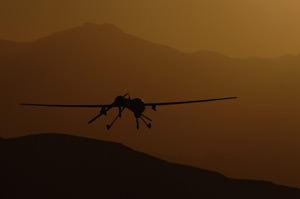
War is hell, as the saying goes. Murder, on the other hand, is a crime. In this age of the “long war” pitting the United States against the forces of global terror, it is critical that the American people be able to distinguish between the two. The legitimate application of military power to a problem that manifests itself, directly or indirectly, as a threat to the legitimate national security interests of the United States, while horrible in terms of its consequences, is not only defensible but mandatory.
The true test of a society and its leaders is the extent to which every effort is made to both properly define a problem as one worthy of military intervention and then exhaust every option other than the use of force. It is true that President Barack Obama inherited the war in Afghanistan from his predecessor and therefore cannot be held accountable for that which transpired beyond his ability to influence. But the president’s recent decision to “surge” 30,000 additional U.S. military troops into Afghanistan transfers ownership of the Afghan conflict to him and him alone. It is in this light that his decision must be ultimately judged.
In many ways, Obama’s presentation before the Long Gray Line at West Point, in which he explained his decision to conduct the Afghanistan surge, represented an insult to the collective intelligence of the American people. The most egregious contradiction in his speech was the notion that the people of Afghanistan, who, throughout their history, have resisted central authority whether emanating from Kabul or imposed by outside invaders, would somehow be compelled to embrace this new American plan.
At its heart, the strategy requires a fiercely independent people to swear fealty to a man, Hamid Karzai, whose tenure as Afghanistan’s president has been marred by inefficiencies and corruption (even Obama was forced to acknowledge the fraudulent nature of the recent election which secured Karzai’s second term in office). Trying to reverse centuries of adherence to local authority and tribal loyalty with the promise of effective central government would represent a monumental challenge for the most efficient and honest of Afghan leaders. That we are attempting to do so behind the person of Karzai represents the height of folly.
For any military-based solution to have a chance of succeeding, we would need to deploy into Afghanistan an army of social scientists capable of navigating the complex reality of intertribal and interethnic relationships. They would require not only astute diplomatic skills that would enable them to bring together Hazara Shiite and Pashtun Sunni, or Uzbek and Tadjik, or any other combination of the myriad of peoples who make up the populace of Afghanistan, but also an understanding of multiple native languages and dialects. But the reality is we are instead dispatching 20-year-old boys from Poughkeepsie whose skill set, perfected during several months of predeployment training, is more conducive to firing three rounds center mass into a human body.
The nation-building or “civilian strategy” envisioned by President Obama, impossibly ambitious even under the most ideal conditions, simply cannot be achieved with the resources at hand, whether in 18 months or 18 years. That he has chosen to place at risk the lives of even more American troops, and by extension the citizens of Afghanistan and Pakistan, in the pursuit of such unattainable ambition is inexcusable.
The American military is unmatched in its ability to wage war. If the problem of Afghanistan was able to be defined in military terms alone, then perhaps Obama’s surge would provide the basis of a solution. But the Afghan problem has never been a military problem. The United States has, from the very beginning of its Afghanistan misadventure, sought to define the mission within the overall context of a “war on terror.” But the real mission revolves more around bringing to justice the perpetrators of mass murder and building international consensus to help prevent another such crime than it does any variation of closing with and destroying an enemy through firepower, maneuver and shock effect, which is the traditional core of any military operation.
The events of Sept. 11, 2001, created problems best dealt with through diplomacy, law enforcement and intelligence. That the United States chose to define it instead as an act of war means that we have never assembled the tool set necessary to solve the Afghan problem, which explains a recent admission by U.S. military officers that, after eight years of war, America was at “square one” in Afghanistan.
Obama’s characterization of the threat faced by the United States and its allies in the expanded Afghanistan-Pakistan (Af-Pak) theater of operations is as misleading as it is inaccurate. There is no singular, homogeneous enemy to be confronted by a surging U.S. military. The notion that the Afghan Taliban, Pakistani Taliban and al-Qaida fighters operating in both countries are part of an overarching Islamic fundamentalist movement seeking to export violence to the shores of America is fundamentally wrong. While the president may in fact have seen intelligence information (of undetermined veracity) that shows that some individuals or groups operating in the Af-Pak area of operations have in fact plotted such attacks, to characterize these players and their actions as representing a majority (or even significant minority) opinion among the thousands of fighters opposing the United States and its allies is just plain wrong. Yet, having accepted the definition of the Af-Pak problem in military terms, Obama had no choice but to accede to the solutions put forward by such charismatic military leaders as Gen. David Petraeus (the commander of U.S. Central Command, or CENTCOM) and Gen. Stanley McChrystal, the commander of U.S. forces in Afghanistan.It is not just that generals such as Petraeus and McChrystal dominate the public face of military leadership in America today. The real problem is that the organization they represent, CENTCOM, dominates the entire U.S. military — and, by extension, the U.S. military-industrial-congressional complex — as no other unified command has done in U.S. history. Even at the height of the Vietnam War, the demands of the Military Assistance Command-Vietnam (MACV) on the U.S. military establishment had competition from U.S. European Command, U.S. Strategic Command and U.S. Pacific Command, because of the Cold War. Today, the only show in town is CENTCOM, given that its theater of operations encompasses the principal zones of operation in the “war on terror.”
The requirements of CENTCOM drive nearly every aspect of the U.S. military today, including training, procurement and operations. Even strategic nuclear forces have had their work impacted by the need of CENTCOM to strike deep underground targets associated with Iran’s nuclear program. Given the inherently militarized nature of the “war on terror,” CENTCOM has supplanted the Department of State as the “face” of America in terms of official interaction between the United States and the nations of an area of operations ranging from Africa to Pakistan.
CENTCOM therefore dominates issues such as economic assistance and other nation-to-nation interaction not normally associated with military operations. The combined military-diplomatic-economic activity associated with the work of CENTCOM provides it with unmatched leverage at home and abroad. While not intended as a direct result of the “war on terror,” CENTCOM has morphed into a virtual nation-state, operating largely independent of traditional checks and balances associated with the functioning of unified military commands.
Despite the command’s unprecedented power and influence, it would not have been all that difficult for Obama to stand up to the pressures brought to bear by CENTCOM in regard to Afghanistan. He is, after all, the commander in chief. The fact is, Obama opted out of any serious opposition to the plan for the most base of reasons — politics. Any serious effort on the part of Obama to meaningfully contest the CENTCOM-backed surge in Afghanistan would have triggered a contentious political struggle with both the military and Congress at a time when the president is pushing for passage of health care reform, the centerpiece of his domestic policy agenda. The reality is that, yet again, American soldiers, sailors, airmen and Marines are being sacrificed for the political advantage of an American politician. This was a charge that was all-too-popular during the administration of George W. Bush. That such an accusation can so readily be applied to Barack Obama, after only a year in office, underscores the magnitude of the failure of leadership and imagination he has exhibited when it comes to the Af-Pak surge.
This lack of imagination was most evident in how the president sought to justify the Af-Pak surge. “This is the epicenter of violent extremism practiced by al-Qaida,” he said in his West Point speech. In addition to his gross oversimplification of the Taliban in both Afghanistan and Pakistan and its relationship with al-Qaida, Obama felt compelled to press the same fear-induced 9/11 buttons that were the trademark of his predecessor. “It is from here that we were attacked on 9/11, and it is from here that new attacks are being plotted as I speak.”
The continued focus on hunting down Osama bin Laden further underscores the lack of sophistication of his strategy. It is likely that bin Laden was not the central force behind the 9/11 terror attacks on the United States, contrary to popular opinion. That honor goes to Ayman al-Zawahiri, bin Laden’s Egyptian associate whose radical Islamic fundamentalist credentials trump even those of his better-known Saudi Arabian partner, and Khalid Sheikh Mohammed, the al-Qaida operations chief currently in U.S. custody awaiting trial in New York.
That bin Laden was complicit in the 9/11 attacks, and should be held to account for his crimes, is not a question. But the notion that by somehow “getting” bin Laden the United States would break the back of al-Qaida today is absurd. People should start thinking about the day after bin Laden dies. Al-Qaida cells will continue to function as they did the day before bin Laden died. The biggest measurable change will be the level of popular support for al-Qaida worldwide — it will skyrocket as bin Laden’s myth and demise inspire many thousands to join in a global jihad against the West and encourage fundamentalist Muslims from state and nonstate players alike to contribute countless more millions of dollars to underwriting this effort. There can be no greater boost to bin Laden’s cause than America’s continued singular focus on bringing him in, “dead or alive.” The exclusive militarization of the ongoing “hunt” for bin Laden plays directly into the Saudi terrorist’s game plan.
Revenge is not a defensible motive for a nation like the United States. Justice is. De-linking our hunt for bin Laden from the failed (and flawed) vehicle of the “war on terror” would be a wise move, but one that sadly is not going to happen in the foreseeable future if the rhetoric of Obama at West Point serves as a guide. And, in a nation that continues to be gripped (and manipulated) by the horrors of 9/11, it remains to be seen whether the concept of justice, as defined by American law, ideals and values, can ever be applied to the perpetrators of that crime. The trial of Khalid Sheikh Mohammed will serve as a litmus test in this regard. Given America’s track record to date in handling the alleged 9/11 mastermind (the water-boarding of Mohammed 183 times continues to boggle the mind), it is hard to anticipate his exposure to the American legal system as anything but a kangaroo court.The “war on terror” has shredded the concept of the rule of law, at least as applied by the United States within the context of this struggle. While Obama has made moves to fix some of the symptoms of the flawed policies of his predecessor, the underlying foundation of American arrogance and exceptionalism from which such policies emerged remains unchanged. There is no more telling example of this than the current program of targeted assassination taking place under the guise of armed unmanned aerial drones (also known as remotely piloted vehicles, or RPVs) operating in the Af-Pak theater of operations.
All pretense of either Afghan or Pakistani sovereignty disappears when these drones take to the air. Ostensibly used for intelligence gathering and lethal direct-action operations against so-called high-value targets (i.e., senior al-Qaida or Taliban leadership), RPV missions have become increasingly popular within the U.S. military and intelligence communities as a risk-free means of bringing maximum harm, in highly discriminatory fashion, to the enemy. Expansion of the United States’ RPV effort in Af-Pak has become a central part of the surge ordered by Obama, complementing the 30,000 combat troops he has ordered deployed to the region. But exactly who is targeted by these RPV operations? While the U.S. military and intelligence community maintains that every effort is made to positively identify a target as hostile before the decision to fire a missile or drop a bomb is made, the criteria for making this call are often left in the hands of personnel ill-equipped to make it.
In the ideal world, one would see the fusion of real-time imagery, real-time communications intercept and human sources on the ground before making such a call. But in reality this “perfect storm” of intelligence intersection rarely occurs. In its stead, one is left with fragmentary pieces of data that are cobbled together by personnel far removed from the point of actual conflict whose motivations are geared more toward action than discretion. Often, the most critical piece of intelligence comes from a human source who is using the U.S. military as a means of settling a local score more than furthering the struggle against terror. The end result is dead people on the ground whose demise has little, if any, impact on the “war on terror,” other than motivating even more people to rise up and struggle against the American occupiers and their Afghan or Pakistani cohorts.
Supporters of the RPV program claim that these strikes have killed over 800 “bad guys,” with a loss of only about 20 or so civilians whose proximity to the targets made them suspect in any case. Detractors flip these figures around, noting that only a score or more kills of “high-value targets” can be confirmed, and that the vast majority of those who have died or have been wounded in these attacks were civilians. In a conflict that is being waged in villages and towns in regions traditionally prone to intense independence and religious fundamentalism, distinguishing good from bad can be a daunting task. Given the U.S. track record, under which tribal gatherings and family functions such as weddings have been frequently misidentified as “hostile” gatherings and thus attacked with tragic results, one is inclined to doubt the official casualty figures associated with the RPV strikes.
Rather than furthering the U.S. cause in the “war on terror,” the RPV program, which President Obama seeks to expand in the Af-Pak theater, in reality represents a force-enhancement tool for the Taliban. Its indiscriminate application of death and destruction serves as a recruitment vehicle, with scores of new jihadists rising up to replace each individual who might have been killed by a missile attack. Like the surge that it is designed to complement, the expanded RPV program plays into the hands of those whom America is ostensibly targeting. While the U.S. military, aided by a fawning press, may seek to disguise the reality of the RPV program through catchy slogans such as “warheads through foreheads,” in reality it is murder by another name. And when murder represents the centerpiece of any national effort, yet alone one that aspires to win the “hearts and minds” of the targeted population, it is doomed to fail.
Scott Ritter was a U.N. weapons inspector in Iraq from 1991 to 1998. He is the author of “Target Iran” (Nation Books, 2007).
Your support matters…Independent journalism is under threat and overshadowed by heavily funded mainstream media.
You can help level the playing field. Become a member.
Your tax-deductible contribution keeps us digging beneath the headlines to give you thought-provoking, investigative reporting and analysis that unearths what's really happening- without compromise.
Give today to support our courageous, independent journalists.
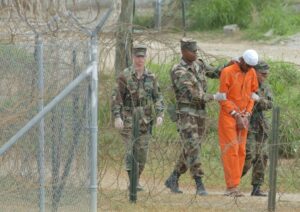
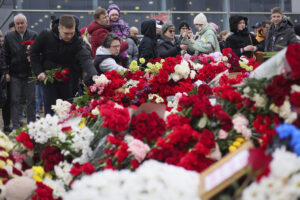
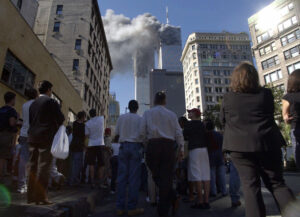

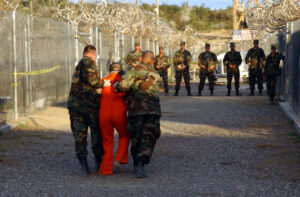
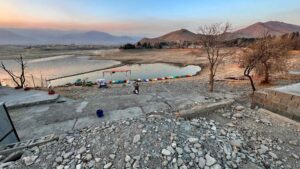
You need to be a supporter to comment.
There are currently no responses to this article.
Be the first to respond.